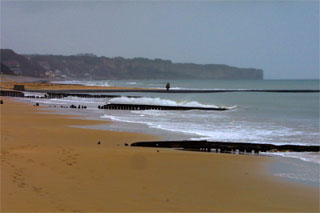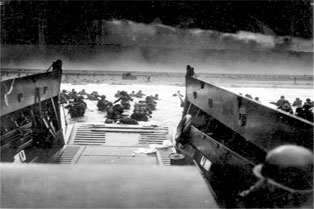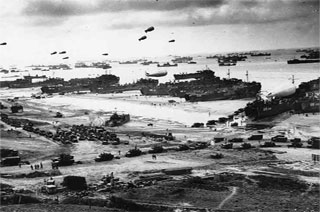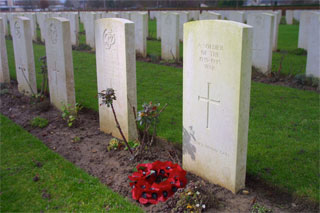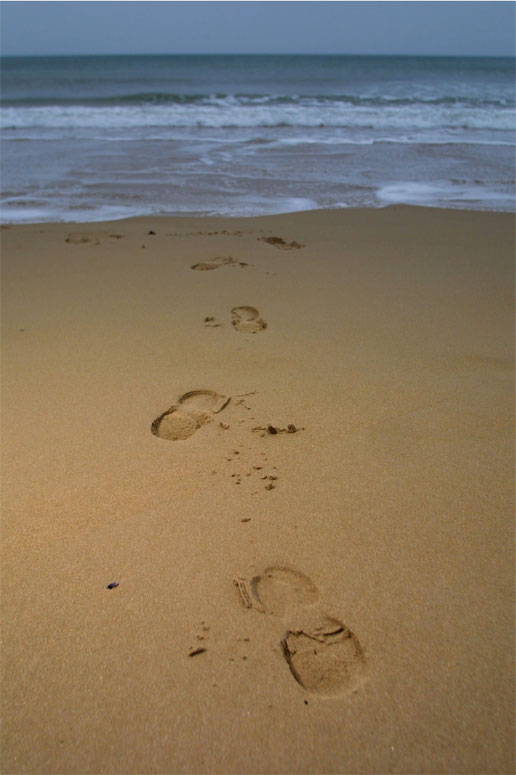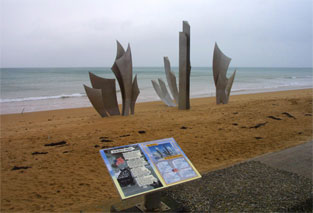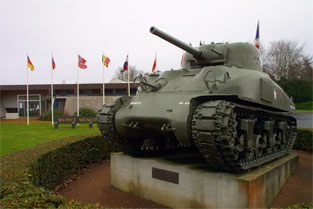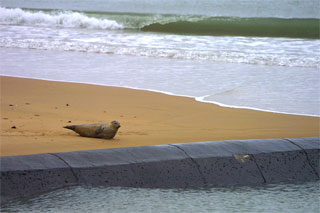Utaha, Omaha, Gold, Juno og Sword. Five bridgeheads were established with the intent of liberating Europe from five years of German occupation. The Atlantic wall was particularly dense here, so close to Great Britain. Gun emplacements, artillery, mine fields and anti tank obstacles where strutting out towards the sea, where an allied invasion was expected any day. All of a sudden, around five o`clock in the morning, the German soldiers on duty rubbed the sleep out of their faces and stared in disbelief towards the silhouettes that emerged in the horizon; 6,900 allied craft, 12,000 air craft and almost 140,000 troops, the greatest armada the world had ever seen, was approaching rapidly, its soldiers ready to storm ashore on the quiet beaches. Operation Overlord was a reality.
These scenes have been made immortal through numerous films and documentaries in the years after, but it is still hard to imagine what must have been going through the minds of soldiers on both sides. Out in the ocean, allied forces from USA, Great Britain, Canada, Poland and many other nations were waiting to storm ashore, many of them to their certain deaths. They were well equipped and had trained for a long time, but a similar amphibious operation had never been successfully conducted before. As we now know, the operation became a carnage. The first day alone, more than 8,000 allied soldiers, and nearly as many German ones, died on the beaches. But following fierce fighting, the allied managed to dig in on some places, and at nightfall the first night, a few square kilometres of land had been successfully occupied. And even more importantly; Secured bridgeheads in order for more soldiers, tanks and artillery to be brought ashore and thrown into the battle against the Nazi-German beast.
Still, it was to take almost a year before Hitlers Germany was brought to its knees, and the allied war machine could finally stop. By then, Hitler had committed suicide, more than 200,000 western allied soldiers had lost their lives, and more than a million German and two million Soviet-Russian soldiers had died along with an unknown number of civilians on both sides. All of this feels remote as we stroll along te beach at Omaha Beach, even though a monument and some posters with information about the operation can be seen.
Today, old enemies have become friends again, and Germany and France are examples on how one can build peace ad reconciliation. The Soviet Union, the other evil empire in Europe in the 1940s, and Hitlers sworn enemy, is gone. Most Europeans living today have never felt war on their bodies, and have no idea what it feels like to go to bed hungry. But the endless columns of headstones to be found in the military cemeteries near the beaches of Normandy bear witness to the fact that we must never allow ourselves to forget.
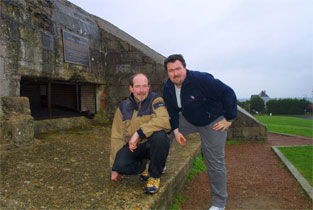
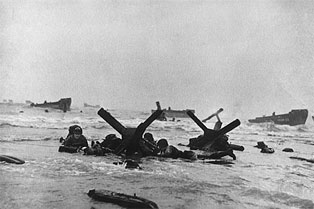
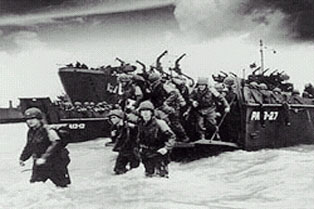
# Operation Overlord was the codename for the Western allied landing in France on the 6th of June 1944. The operation included more than 1,4 million soldiers (by 23rd of July 1944), 6,900 craft and 12,000 air craft.
# The landing is the largest amphibious operation in recorded history, and despite large allied losses, it was deemed a success. 11 months after the first allied soldiers waded ashore in Normandy, all German resistance was broken, and Hitler had committed suicide.
# The Soviet Union had been fighting the Germans on European soil since June 1941, and Stalin was pressing for the opening of secondary fronts by the allies in Europe. Landings were conducted in Sicily, in Italy and then in France.
# WW II officially ended in Europe with the unconditional surrender of Germany on the 8th of May 1945.
# It took four more months before Japan capitulated, and only after the US had conducted the first, and up until now the only, nuclear attack on the country.
# Historians are unable to agree on how many people lost their lives during the Second world war, but numbers between 70 and 90 million people are frequently mentioned.
(Sources: Wikipedia, worldatwar.net)
